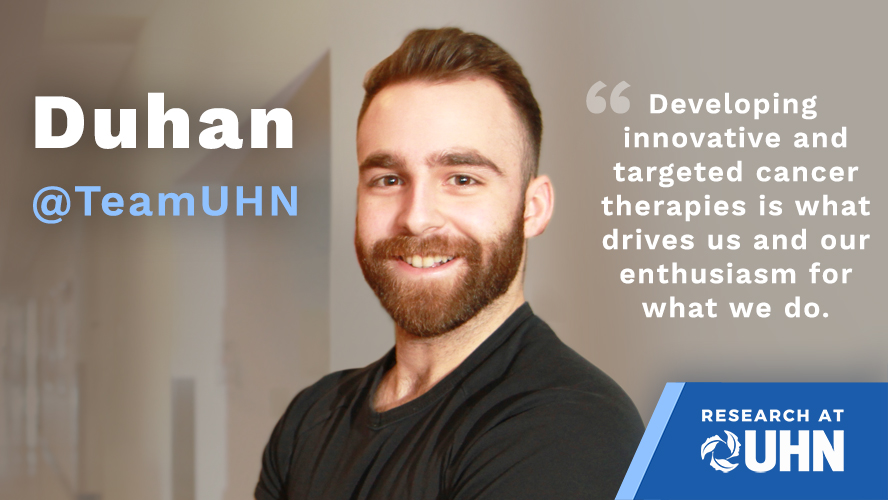
Tell us about your role at UHN.
I am a research technician in Dr. Courtney Jones’ lab at the Princess Margaret Cancer Center. We are working on acute myeloid leukemia (AML), which is a blood cancer that is caused by leukemia stem cells. Normal stem cells and leukemia stem cells have different properties, and we study these differences in the lab.
How long have you been in this role?
I have been at UHN for 11 months, so I am still quite new. Before working at UHN, I completed my bachelor’s degree in biology at the University of British Columbia (UBC), where I graduated with honours.
What are you working on at UHN?
Our lab focuses on understanding leukemia stem cells. Some experiments that I perform involve using small interfering RNAs (siRNAs) to shut down certain genes in cancer cell lines. I use a method called electroporation to introduce siRNAs into the cells. This enables us to study the effects of these genes on protein levels and cellular properties, and, ultimately, to gain insight into their importance to cancer initiation and progression.
What first got you interested in science?
I first learned about scientific research when I was 13 years old. While in Turkey, where I grew up, I remember walking through our city with my father and coming across a book about the history of science. It was focused on the personalities and achievements of famous scientists. I became very inspired by the innovations made possible because of science. Now, I’m very excited that I can contribute to science through my work at UHN.

A photo of Duhan with a coworker in the Jones laboratory.
What makes UHN an ideal place to advance health research?
Working at UHN provides the opportunity for creative and hard-working minds to excel and prosper. Research team members can explore their ideas, and move us closer to new and innovative therapies, while learning from the best minds in the field.
Tell us an interesting fact that people don’t know about you. Do you have any interests outside of work?
When I’m not in the lab, I make electronic music with my laptop using GarageBand—software that is available on mac. If I hadn’t become a scientist, I would have most likely went into music. Research can be stressful, as experimental findings are unpredictable. Making music helps me relax.

Duhan setting up an experiment while at the bench in the Princess Margaret Cancer Research Tower.
What do you see for the future of health research, and what gets you excited about it?
I believe that gene editing-based therapies and personalized medicine are the future of medicine. These new therapies involve making precise changes to the genome. Historically, cancer treatments have lacked precision—although they help patients and kill cancer cells, they sometimes also harm normal cells, which can lead to unwanted side-effects.
In the future, patients will be able to have their cancer assessed on an individual basis—enabling us to design effective treatments that are tailored to each patient. This will reduce or eliminate side effects.
In our laboratory, we are using cutting-edge technology to advance our knowledge of AML. No one knows exactly how leukemia stem cells function—answering this question has the potential to help many people. That is what we are working towards in the laboratory, and what really drives us and our enthusiasm for what we do.
To connect with Duhan, visit him on LinkedIn or Twitter.
How to Participate in You @TeamUHN
You @TeamUHN is a campaign to highlight the important scientific contributions that research lab staff, trainees and learners, administrative staff, core facilities staff, Research Solutions & Services staff, and volunteers make towards A Healthier World through discovery and innovation. If you’re interested in sharing your story, we invite you to complete this form here (link is external) (UHN Office365 account is required; open to UHN staff, trainees and volunteers).

